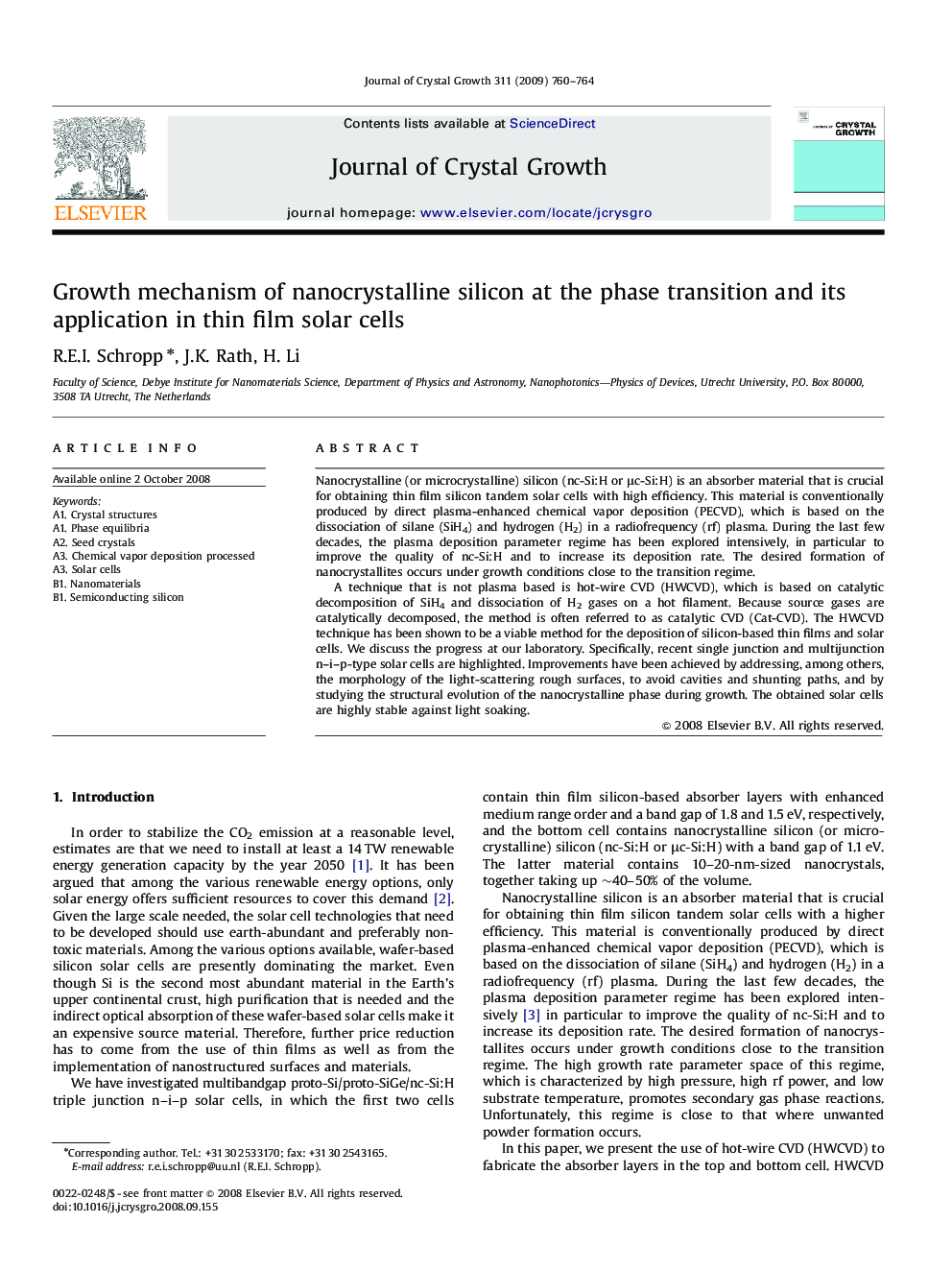| Article ID | Journal | Published Year | Pages | File Type |
|---|---|---|---|---|
| 1793736 | Journal of Crystal Growth | 2009 | 5 Pages |
Nanocrystalline (or microcrystalline) silicon (nc-Si:H or μc-Si:H) is an absorber material that is crucial for obtaining thin film silicon tandem solar cells with high efficiency. This material is conventionally produced by direct plasma-enhanced chemical vapor deposition (PECVD), which is based on the dissociation of silane (SiH4) and hydrogen (H2) in a radiofrequency (rf) plasma. During the last few decades, the plasma deposition parameter regime has been explored intensively, in particular to improve the quality of nc-Si:H and to increase its deposition rate. The desired formation of nanocrystallites occurs under growth conditions close to the transition regime.A technique that is not plasma based is hot-wire CVD (HWCVD), which is based on catalytic decomposition of SiH4 and dissociation of H2 gases on a hot filament. Because source gases are catalytically decomposed, the method is often referred to as catalytic CVD (Cat-CVD). The HWCVD technique has been shown to be a viable method for the deposition of silicon-based thin films and solar cells. We discuss the progress at our laboratory. Specifically, recent single junction and multijunction n–i–p-type solar cells are highlighted. Improvements have been achieved by addressing, among others, the morphology of the light-scattering rough surfaces, to avoid cavities and shunting paths, and by studying the structural evolution of the nanocrystalline phase during growth. The obtained solar cells are highly stable against light soaking.
